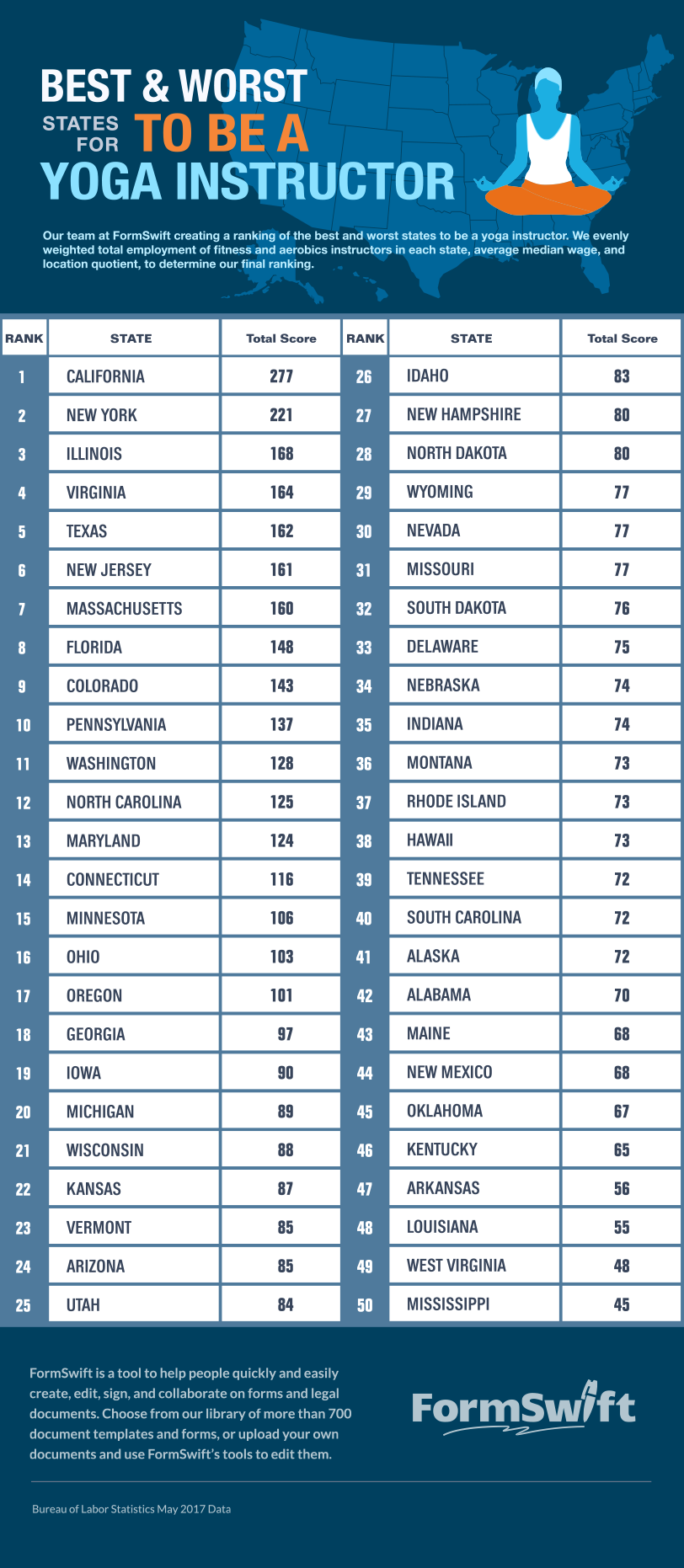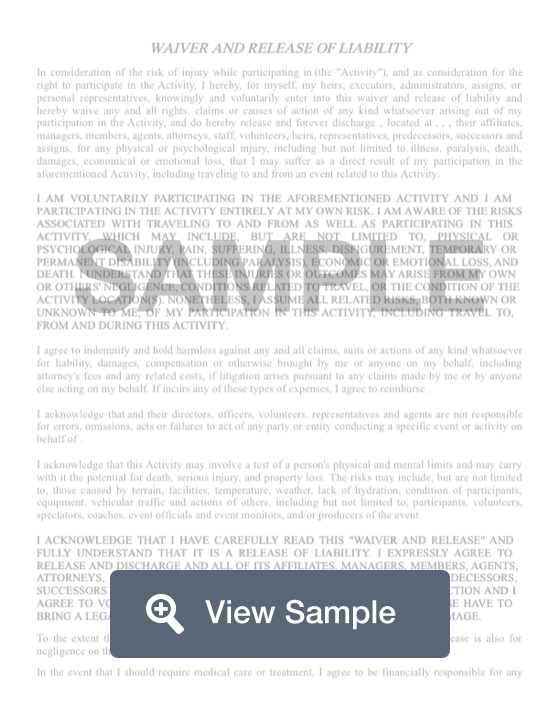What is a Yoga Liability Waiver?
A yoga liability waiver will be used by yoga studios and fitness centers that offer yoga classes. These waiver forms are designed to protect the yoga instructors and the studio or fitness center in the event that someone is injured during a yoga class. New students typically must complete a waiver form before they attend their first yoga class. Waiver forms should also ask the client of his or her date of birth. In one way, collecting the client's date of birth ensures he or she is not a minor. Minors will need to have their parent or guardian fill out the form for them.
Typically, a yoga liability form will include a section that releases the yoga studio and the teachers from liability in case the student suffers an injury. The student must read this statement and sign the waiver if they consent. Many waiver forms will also ask students to list any physical limitations or medical issues they have so they will be on file. Both parties should keep a copy of this form for their records.
The Ultimate Guide to Liability for Yoga Instructors
By FormSwift Editorial Team
July 2, 2018
Introduction
Over 20 million Americans practice yoga on a regular or semi-regular basis. As a result, more and more people are obtaining certifications to teach yoga. This guide is designed for anyone considering becoming a certified yoga instructor. We cover how to identify the right program for you, the legal liabilities associated with teaching, how to find the right insurance policy, and how to craft a liability waiver for your future students. We hope this guide provides a jumping-off point for all you future yoga instructors.
Choosing the Right Yoga Instructor Training Program
There are numerous variations of Yoga. Therefore, before you begin training to become a Yoga instructor it is imperative to identify which type of yoga you wish to teach. Yoga teacher training programs are often type-specific, but there are other programs that offer a more generalized yoga instructor certification.
More general certification programs include instruction on hatha yoga techniques including:
- Vinyasa flow
- Ashtange
- Iyengar
Furthermore, different training programs involve different time commitments, both in terms of program length and intensity of instruction. Intensive training programs require longer hours over a shorter period of time, while longer programs are less frequent, but can require months to complete.
If you schedule permits, intensive training programs offer you the fastest path to the front of a yoga studio as a certified instructor.
Legal Liability
As with related professions, like personal training, there are some general legal precautions to be aware of as a yoga instructor. Most training programs dedicate hours towards safety procedures for classes, assisting, anatomy, etc. Making sure your yoga certification is up-to-date is one way to ensure you are aware of the most recent safety guidelines and best practices.
Additionally, yoga teachers should obtain liability insurance, which protects them in the event that a client suffers a personal injury during a class that requires medical attention. Ensuring you are properly licensed and permitted will help protect you from legal action.
You should also require your students to sign a liability waiver before practicing with you. If you plan to work with private clients in their home or yours, establish a contract that clearly outlines safety guidelines.
There are a host of other safety precautions to take during instruction, those include:
- Ask about injuries: it is the responsibility of the instructor to inquire about injuries before class and offer modifications to accommodate any injuries. Though yoga can ease discomforts like muscular tension and tightness, however, certain physical movements can make injuries worse.
- Ask about medical conditions: certain medical conditions may make it dangerous for clients to practice yoga.
- Explain any risks: before you begin class, and as you move from one pose to another, inform your class of any injury risks associated with movements.
- Offer help, ask to help: make it clear that you can help students get in and out of positions, but be sure you ask for permission before doing so.
- Make sure the studio space is safe: before you begin, examine your surroundings to make sure there are not any potential safety hazards, including wet floors, sharp edges, etc.
- Know your students and their abilities: tailor your flows and poses to the ability of your students. Doing so will not only ensure everyone has the best class possible, it will also help ensure their safety. In other words, asking beginners to do advanced poses is a recipe for injury.
- Establish safety, trust & boundaries: Encourage self-awareness during class. Let your students know it is perfectly acceptable to not do any pose they are uncomfortable with and let students know what poses they should use to rest during class if they need it.
Liability insurance - Yoga Insurance
Once you obtain your certification, you’ll need to purchase liability insurance. Here are some tips for doing so.
Here is a list of questions to ask providers (please note: this is not a comprehensive list):
- How much is the premium?
- Are there rates for part-time instructors (if you aren’t a full time instructor)?
- Are there discounts for members of particular yoga associations?
- Do you require certification by the Yoga Alliance? E-RYT 200 or 500?
- Does the policy cover the studio or just the yoga instructor?
- Does the policy cover teachers in training?
- Who else does the policy cover? Employees? Independent contractors?
- What is the geographic scope of your coverage? If I plan on teaching seminars or retreats outside of the country, am I covered?
- Am I covered if I teach at another studio or in other people’s homes?
- What types of yoga are covered?
- If you offer anything special such as massage make sure you are covered for that too
- Are all props - blocks, straps, swings, etc. covered?
Common liability policies for Yoga instructors
There are many policies available for yoga instructors. Here are some of the most popular:
- Professional liability insurance (for malpractice)
- General liability insurance (for injury)
- Product liability coverage
- Rental damage coverage
Other policies include theft, sexual misconduct, etc.
Where Do I Purchase Insurance?
You can purchase liability insurance from a number of providers that are easily found online, in yoga industry publications, and elsewhere.
Cost of Coverage
Generally, annual premiums range between $159 and $404 depending on the amount of coverage and provider you choose.
Glossary: Insurance jargon
Here are some insurance terms you should be aware of before choosing and purchasing a policy.
- Additional insured: person/entity on the certificate of insurance who is protected if the named insured is negligent (i.e. an employer or the landlord of the studio)
- Claims-made: insurance that covers policyholders for claims that are filed when the policy is active. If an incident is not reported until after the policy expires it will not be covered.
- Occurrence form: covers insured for claims filed during or after policy term, so long as the incident happened when the policy was active.
-
Professional liability insurance: provides protection against negligence lawsuits or misconduct/incompetence claims on policyholder’s behalf
- This is also referred to as malpractice insurance
Yoga Liability Waiver for Clients
As mentioned above, yoga instructors should require their clients to sign a liability waiver. Here are some tips for what a waiver should include:
- Personal information and risk assessment
- Have clients list or circle injuries/ailments that pertain to them
- Physical activity
- Include questions about the client’s level of physical activity
- What exercise do they do, how frequently, for how long, etc.
- Include questions about the client’s level of physical activity
- Agreement
- Require clients to sign a statement that explains they are a willing participant in the yoga class despite the potential risks involved, and they are responsible, should they injure themselves.
- They should also agree to a statement indicating they are in good physical condition and will monitor or stop activities they feel uncomfortable with during class.
- If the class is outdoors be sure to include a statement ensuring the client complies with any associated rules.
What if a student fails to indicate a health issue on their waiver?
Make sure your waiver includes a section requesting any additional information related to health-risks, ailments, or injury history.
Negligence occurs only when you are aware of a pre-existing problem and fail to take proper safety procedures. Therefore, if you are unaware of a student’s condition, but have provided ample space for them to inform you of their ailment--in the waiver, verbally before class, etc.--you are not legally responsible.
What if a student is injured during class?
If someone injured themselves in your class, begin by evaluating the situation and then take action. If the injury appears serious, inform the manager/studio owner before attempting to touch or move the person, and call for medical assistance, if necessary.
Once the injured party is secure or in the care of medical professionals, make sure you have all of their contact information. Then, you should notify your yoga insurance carrier.
Once the episode is dealt with, consider if there is anything you can do to prevent similar injuries in the future.
Yoga Retreat waivers
If you lead a yoga retreat, you may need an additional waiver in addition to the traditional waiver. Make sure the retreat waiver includes the terms and conditions of the retreat, as well as the following:
- Cancellation policy and refunds (if applicable)
- recommendation/requirements that students are protected by health insurance while on the retreat
- Travelers insurance protection requirements
- Meals, transportation, etc. that is included or not
- Emergency contact name and phone number
- Passport information if you are traveling abroad
- Have students sign that their safety on the retreat ultimately is their responsibility
Conclusion
Yoga is one of the most popular forms of exercise in the US. It is also a practice that blends physical and mental wellness. We hope this guide provides you with a thorough foundation of how to begin the process of acquiring a yoga certification and getting in front of a classroom as soon as possible.
Best and Worst States to be a Yoga Instructor
July 25, 2018

Methodology
Our team at FormSwift creating a ranking of the best and worst states to be a yoga instructor. We evenly weighted total employment of fitness and aerobics instructors in each state, along with average median wage and location quotient to determine a total for each state.

